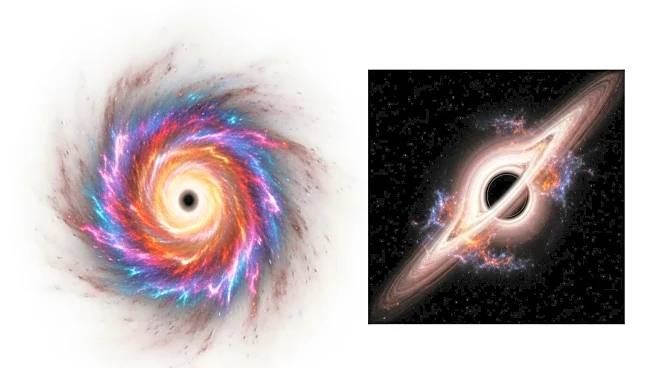What's Happening?
A team of scientists led by Rutgers University has mapped dark matter in the early universe by analyzing Lyman-alpha emitting galaxies. The study, published in The Astrophysical Journal Letters, used data from the Cosmic Evolution Survey Deep Field to trace the invisible scaffolding of the universe created by dark matter. By examining the clustering of these galaxies, researchers identified regions where dark matter is most concentrated. The study provides insights into how galaxies evolve and relate to surrounding dark matter, suggesting that Lyman-alpha emitters may evolve into galaxies like the Milky Way.
Why It's Important?
Understanding the distribution and role of dark matter is crucial for comprehending the universe's structure and evolution. This research enhances models of galaxy formation and the cosmic web, offering a clearer picture of how galaxies merge and grow. The findings have implications for astrophysics, as they refine theories about the universe's large-scale structure and the gravitational forces that shape it. By mapping dark matter, scientists can better predict the behavior of galaxies and the universe's future development.
What's Next?
The ODIN survey will continue to expand, analyzing more galaxies to provide a comprehensive view of the cosmic web. Future studies will delve deeper into the relationship between dark matter and galaxy formation, potentially uncovering new aspects of the universe's evolution. As technology advances, researchers will employ more sophisticated methods to study dark matter, aiming to solve one of the universe's greatest mysteries.










